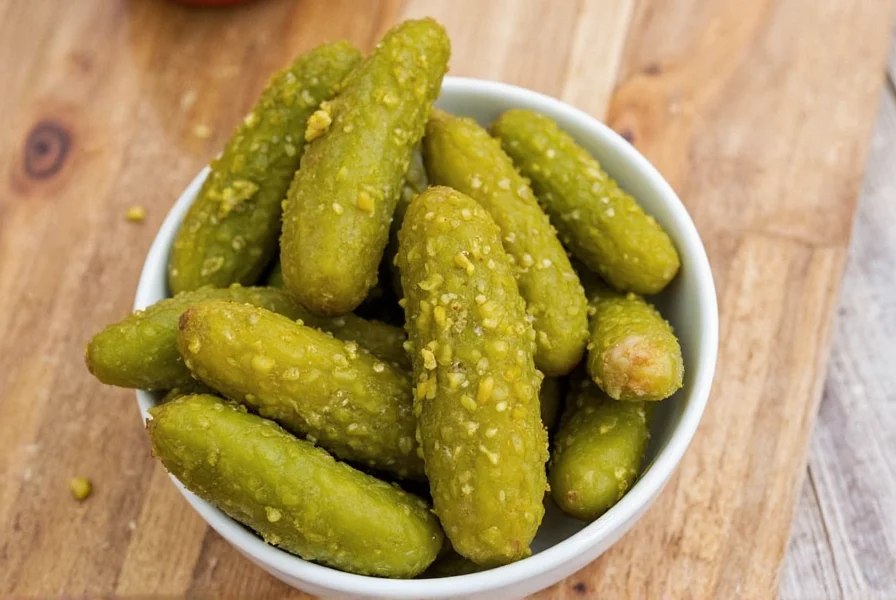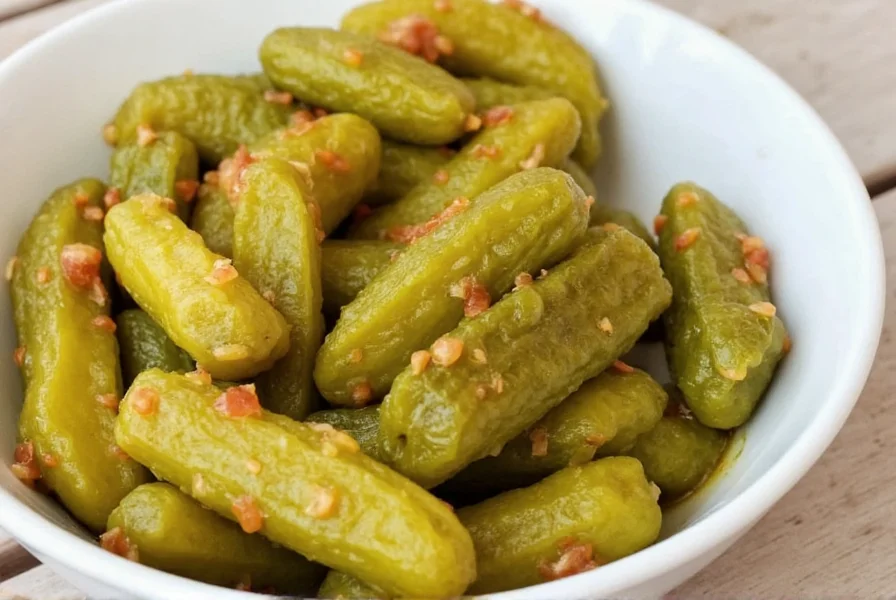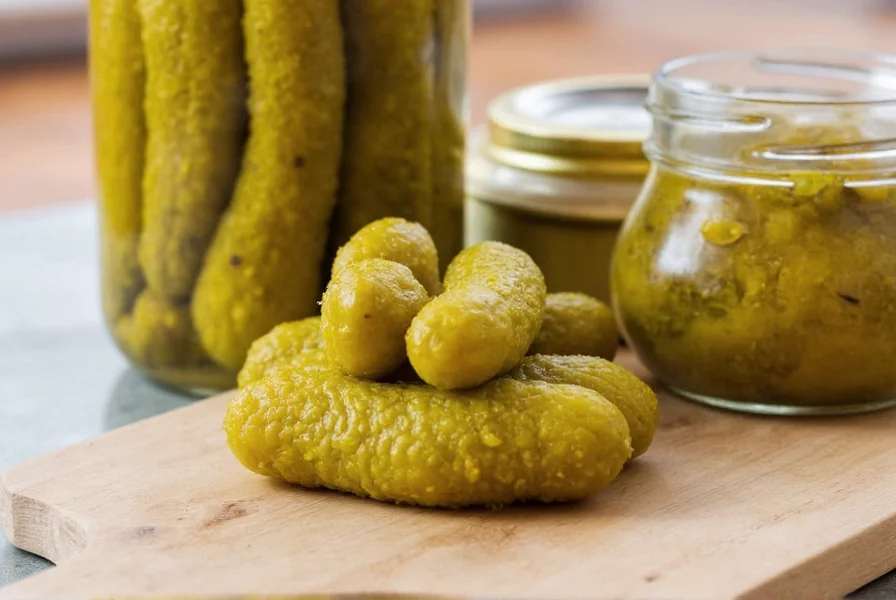If you're searching for a reliable ginger pickle recipe, this authentic homemade version delivers bold flavor with just 7 simple ingredients. The core recipe requires 500g fresh ginger, 150g mustard oil, 100g mustard seeds, 50g fenugreek seeds, 30g turmeric powder, 75g salt, and 3 fresh green chilies. Properly prepared, this traditional Indian ginger pickle will stay fresh for 12-18 months when stored in sterilized glass jars away from direct sunlight. The complete step-by-step method takes approximately 25 minutes of active preparation plus 15 days for optimal flavor development.
Nothing compares to the vibrant, spicy kick of homemade ginger pickle. This traditional Indian preserve combines the natural heat of fresh ginger with aromatic spices to create a condiment that elevates everything from dal to grilled meats. Unlike store-bought versions filled with preservatives, this authentic recipe uses time-tested preservation techniques that maintain both flavor and safety without artificial additives.
Ginger pickle, known as adrak ka achar in Hindi, has been a staple in Indian households for generations. The combination of ginger's natural antimicrobial properties with the preserving power of mustard oil creates a shelf-stable product that develops increasingly complex flavors over time. This recipe follows time-honored preparation methods while incorporating modern food safety practices to ensure your homemade ginger pickle remains delicious and safe to consume for months.
Essential Ingredients for Perfect Ginger Pickle
The magic of authentic ginger pickle lies in the precise balance of ingredients. Each component serves a specific purpose in both flavor development and preservation:
| Ingredient | Quantity | Function |
|---|---|---|
| Fresh ginger root | 500g | Provides the main flavor base and natural antimicrobial properties |
| Mustard oil | 150g | Preservative agent and flavor carrier (must be heated to smoking point) |
| Mustard seeds | 100g | Adds pungency and additional preservation qualities |
| Fenugreek seeds | 50g | Contributes complex flavor and aids in preservation |
| Turmeric powder | 30g | Natural preservative and colorant with health benefits |
| Salt | 75g | Critical for preservation and flavor enhancement |
| Green chilies | 3 | Adds heat and visual appeal (adjust to taste) |
When selecting ginger for your homemade ginger pickle, choose firm, plump roots with smooth skin and minimal wrinkles. Younger ginger tends to be more tender and less fibrous, making it ideal for pickling. Avoid any pieces with soft spots or mold. For the mustard oil, ensure it's cold-pressed and unrefined for authentic flavor and maximum preservation benefits.
Equipment You'll Need
Proper equipment ensures both safety and quality in your ginger pickle preparation:
- Non-reactive mixing bowls (glass or stainless steel)
- Sharp vegetable peeler or spoon for ginger skin removal
- Sterilized glass jars with airtight lids (Mason jars work well)
- Wooden spoon for mixing (avoid metal which can react with ingredients)
- Heavy-bottomed pan for heating oil
- Sterilizing equipment (pot for boiling jars)
Step-by-Step Ginger Pickle Preparation
Follow these detailed instructions for perfect ginger pickle every time:
Preparation Phase (15 minutes)
- Thoroughly wash 500g fresh ginger under cold running water
- Peel ginger using a spoon (gentler than a peeler) or vegetable peeler
- Slice ginger into thin matchsticks (julienne cut) approximately 2-3 inches long
- Place sliced ginger in a bowl, add 25g salt, and let sit for 2 hours to draw out moisture
- After 2 hours, drain any liquid and pat ginger dry with clean kitchen towels
- Sterilize glass jars by boiling in water for 10 minutes, then air dry completely
Cooking Phase (10 minutes)
- Heat 150g mustard oil in a heavy-bottomed pan until it reaches smoking point
- Reduce heat and add 100g mustard seeds, 50g fenugreek seeds, and 3 chopped green chilies
- Fry spices for 2-3 minutes until mustard seeds begin to pop
- Remove from heat and let cool slightly (3-5 minutes)
- Mix in 30g turmeric powder and remaining 50g salt
- Add the prepared ginger pieces and mix thoroughly
- Pour the entire mixture into sterilized glass jars, leaving 1 inch of headspace
- Seal jars tightly and store in a cool, dark place for 15 days before opening
Troubleshooting Common Ginger Pickle Issues
Even experienced pickle makers encounter challenges. Here's how to address common problems:
Mold Development
If you notice mold on your ginger pickle, discard the entire batch immediately. Mold indicates improper sterilization or moisture contamination. Prevent this by ensuring all equipment is completely dry before use and maintaining the proper salt-to-ginger ratio.
Soft or Mushy Texture
Ginger should retain some firmness. If your ginger becomes too soft, you likely used older ginger or didn't properly draw out moisture before pickling. Always use fresh ginger and allow the full 2-hour salting period to remove excess water.
Insufficient Flavor Development
If your ginger pickle lacks depth after the curing period, it may not have had enough time to develop flavors. Authentic ginger pickle requires at least 15 days for optimal flavor, though 30-60 days yields even better results. Ensure you're storing in a cool, dark place during this maturation period.
Storage and Shelf Life Guidelines
Proper storage determines both safety and quality of your homemade ginger pickle:
- Store in sterilized glass containers with airtight lids
- Keep in a cool, dark place away from direct sunlight
- Always use clean, dry utensils when serving to prevent contamination
- Properly prepared ginger pickle lasts 12-18 months at room temperature
- Once opened, refrigerate and consume within 3 months
- Check for signs of spoilage (unusual odor, mold, bubbling) before each use
Serving Suggestions for Ginger Pickle
This versatile condiment enhances numerous dishes:
- Serve alongside traditional Indian meals with dal and rice
- Add to sandwiches for a spicy kick
- Pair with grilled meats or fish
- Chop finely and mix into salad dressings
- Use as a flavor booster in stir-fries
- Enjoy with plain yogurt for a digestive aid
Popular Ginger Pickle Variations
Once you've mastered the basic ginger pickle recipe, try these authentic variations:
Lemon Ginger Pickle
Add the zest of 2 organic lemons during the cooking phase for a citrusy twist. The lemon adds brightness while maintaining the preservation qualities.
Sweet and Spicy Ginger Pickle
For those who prefer less heat, reduce chilies to 1 and add 50g jaggery (unrefined cane sugar) during the cooking phase. This variation balances the ginger's natural heat with subtle sweetness.
Vinegar-Based Ginger Pickle
For a quicker preparation method, replace mustard oil with 100ml apple cider vinegar and reduce salt to 50g. This version is ready to eat in just 7 days but has a shorter shelf life of 6-8 months.

Safety Considerations for Homemade Pickling
Food safety is paramount when preparing shelf-stable preserves:
- Always use sterilized containers to prevent bacterial contamination
- Maintain proper salt concentration (minimum 15% by weight of vegetables)
- Ensure ginger is completely submerged in oil to prevent mold growth
- Never use aluminum or copper containers which can react with acidic ingredients
- Discard any pickle showing signs of spoilage - when in doubt, throw it out
Following these safety guidelines ensures your homemade ginger pickle remains both delicious and safe to consume throughout its shelf life. The combination of salt, oil, and natural antimicrobial properties of ginger creates an environment inhospitable to harmful bacteria when properly prepared.

Frequently Asked Questions
How long does homemade ginger pickle last?
Properly prepared and stored ginger pickle maintains quality for 12-18 months at room temperature. Once opened, refrigerate and consume within 3 months. The key factors for longevity are proper sterilization of jars, correct salt-to-ginger ratio, and complete submersion in oil.
Can I use olive oil instead of mustard oil in ginger pickle?
While mustard oil is traditional and provides superior preservation qualities, you can substitute with high-quality extra virgin olive oil. However, olive oil-based ginger pickle has a shorter shelf life (6-8 months) and slightly different flavor profile. Never use refined oils as they lack the necessary preservation properties.
Why does my ginger pickle taste bitter?
Bitterness typically occurs when mustard oil isn't heated to its smoking point before use, or when fenugreek seeds are overcooked. Mustard oil must reach its smoking point to eliminate raw, pungent flavors. Fenugreek seeds should only be fried until they darken slightly - over-frying creates bitterness that transfers to the entire batch.
Can I make ginger pickle without vinegar or oil?
Traditional shelf-stable ginger pickle requires either oil or vinegar for preservation. Oil-based pickles use mustard oil's natural preservative qualities, while vinegar-based versions rely on acidity. Refrigerator pickles can be made without these but only last 2-3 weeks and require constant refrigeration. For long-term storage without preservatives, fermentation is an alternative method but requires careful monitoring.
How do I know if my ginger pickle has gone bad?
Signs of spoilage include visible mold, bubbling or fermentation activity after the initial curing period, unpleasant or alcoholic odors, significant color changes, or slimy texture. If you notice any of these signs, discard the entire batch immediately. Properly preserved ginger pickle should maintain a consistent texture and pleasant spicy aroma throughout its shelf life.











 浙公网安备
33010002000092号
浙公网安备
33010002000092号 浙B2-20120091-4
浙B2-20120091-4